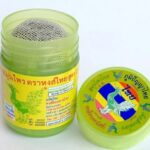A new race at 2 nm and why materials matter
Japan’s semiconductor materials developers are in expansion mode as global chipmakers push toward mass production of 2 nm logic chips. The sprint to smaller features is driven by demand from artificial intelligence, high performance computing, and advanced automotive systems. Materials are the hidden backbone of this transition. Every wafer, resist, solvent, gas, adhesive, and resin must meet tighter tolerances, higher purity standards, and stricter uniformity than previous nodes. That is where Japanese suppliers, long trusted for quality and precision, see a window to grow.
- A new race at 2 nm and why materials matter
- Who is investing and where capacity is growing
- Inside the 2 nm challenge
- Rapidus, government backing, and the domestic ecosystem
- Global players in Japan and the pull on local suppliers
- What 2 nm means for AI, autos, and energy use
- Risks, constraints, and how suppliers are responding
- Outlook for Japan’s materials leadership
- Key Points
At 2 nm, leading chipmakers are adopting gate all around transistors (GAA) and more complex chip architectures. GAA improves control over current flow inside transistors, which helps reduce leakage and power use at very small scales. These designs require extreme ultraviolet lithography (EUV) resist chemistries, high purity acids and solvents, ultra flat silicon wafers, and specialized packaging materials. Each step has narrow process windows, so consistent materials performance is a gating factor for yield.
Investments by Japanese suppliers target this inflection. Tokyo Ohka Kogyo plans a new photoresist and high purity chemicals complex near Seoul to support leading foundries in Asia. Adeka is upgrading equipment for advanced semiconductor chemicals. Wafer leaders Shin-Etsu Chemical and SUMCO, which together supply a large share of 300 mm silicon wafers, are tuning substrates for tighter flatness and lower defect densities required by 2 nm patterning. At the same time, demand for packaging materials is rising as chipmakers connect processors and high bandwidth memory in dense configurations for AI systems. These moves align with the industry’s timeline, where TSMC, Samsung, and Intel push new nodes, and Japan’s Rapidus aims to bring 2 nm manufacturing onshore within this decade.
Who is investing and where capacity is growing
Capital spending by Japanese materials firms is spreading across the front end and back end of chipmaking. The near term goal is to serve first wave 2 nm production at overseas foundries while preparing for new domestic demand from Rapidus and other projects in Japan. The investments reflect a broader shift by the country to reclaim a central role in advanced semiconductors by focusing on areas of strength, especially materials and equipment.
Photoresists and high purity chemicals
Tokyo Ohka Kogyo, a global leader in photoresists, plans a new site near Seoul that includes an EUV resist plant and a high purity chemicals factory. EUV exposure uses a very short wavelength of light, so the resist must combine high sensitivity with low line edge roughness and minimal contamination. Process control is unforgiving at 2 nm, which raises the bar for resist formulation and post application treatments. Companies are also boosting capacity for developers, strippers, and cleaning chemistries, since every extra rinse or trace metal can impact device performance.
Wafers, slurries, and specialty gases
Shin-Etsu Chemical and SUMCO supply a large share of the world’s 300 mm wafers, and their products underpin lithography accuracy at advanced nodes. At 2 nm, wafer flatness, particle control, and crystal perfection must improve again, both for front end patterning and for backside processes under study. Consumables such as chemical mechanical polishing slurries are evolving in parallel to deliver uniform removal rates across denser patterns. Specialty gases for deposition and etch also need tighter purity to avoid interactions that disturb GAA structures.
Packaging materials move to center stage
As chip power and memory bandwidth rise, advanced packaging becomes a performance lever. Japanese companies like Ajinomoto Fine-Techno (well known for ABF build-up films), Resonac, Nissan Chemical, Sumitomo Bakelite, and Namics are expanding in underfills, encapsulants, temporary bonding adhesives, and resins to control warpage. The JOINT2 collaboration, which brings together materials specialists with Rapidus and Japan’s Leading-Edge Semiconductor Technology Center, is working on 3D packaging flows that keep chips aligned and thermally stable. Precision tools from Japanese equipment makers support this shift, making packaging both a materials challenge and an engineering discipline.
Inside the 2 nm challenge
The jump from today’s leading nodes to 2 nm is not simply a smaller grid. GAA changes the geometry of transistors by wrapping the gate around nanosheets or nanowires. That improves gate control, which helps maintain performance at very small sizes. It also demands careful selection of high-k dielectrics, metal gates, and work function tuning metals, plus an exacting cleanroom environment. Any trace contamination can alter threshold voltages or introduce leakage paths.
EUV lithography is another pillar. Patterns at 2 nm require more complex multi-patterning steps, and upcoming high numerical aperture EUV tools will push resolution further. That raises requirements on resist chemistry, post exposure bake recipes, and defect inspection. Photoresists must balance sensitivity, resolution, and roughness while minimizing stochastic defects. The solvents and rinse chemistries around those resists must not etch or swell delicate features.
Packaging is now a first order design decision. AI accelerators pair compute die with stacks of high bandwidth memory using 2.5D and 3D techniques. Interposers, microbumps, copper pillars, and through-silicon vias place new demands on adhesives, die attach films, and thermal interface materials. These compounds control stress, reduce warpage, and move heat out of dense assemblies. Performance targets at 2 nm will not be reached without reliable packaging materials that hold up through thermal cycles and long lifetimes.
Rapidus, government backing, and the domestic ecosystem
Rapidus sits at the center of Japan’s plan to produce 2 nm chips onshore. The company began pilot production in Chitose, Hokkaido in April 2025 and has demonstrated core elements of 2 nm GAA devices with partners. It aims to deliver customer samples after prototype runs and to target mass production in 2027. The government has pledged more than 1.7 trillion yen in support and has created new mechanisms for investment and loan guarantees. Policymakers have also sought safeguards, including conditions tied to public funding that protect key technology and corporate governance.
Rapidus President Atsuyoshi Koike has described the scale of the task in plain terms. He has pointed to yield learning and reliability as the decisive barriers on the way to stable high volume output.
“Developing mass production technology is extremely difficult, with confirming yields and ensuring reliability as major obstacles.”
The stakes extend beyond one company. If Japan cannot anchor leading logic production, the risk increases that equipment and materials suppliers migrate capacity abroad to follow customers. That is why the Rapidus effort is designed as a platform for the broader ecosystem, with joint development spanning materials, metrology, lithography, and packaging. The company is experimenting with a single-wafer or batch processing flow to accelerate feedback and shorten learning cycles, and it is pursuing an integrated front end and back end approach aimed at faster customer turnarounds in niche markets.
Talent remains a constraint. Rapidus has sent engineers to partner labs to learn advanced processes, while recruiting at home and overseas. Materials companies are doing the same, building teams near customer fabs in Japan and Korea to support rapid trials and on-site process tuning.
Global players in Japan and the pull on local suppliers
Japan’s materials surge is tied to new production footprints inside the country. TSMC’s subsidiary in Kumamoto is expanding with a second plant, increasing the need for wafers, chemicals, and resists in the region. Local procurement reduces lead times and improves quality control, which is valuable for ramping new nodes.
Samsung is also deepening its presence. The company plans to open an advanced packaging research center in Yokohama, with the goal of improving connections between processors and memory for AI workloads. The lab will coordinate with Japanese materials and equipment suppliers and universities, reinforcing the link between research, pilot lines, and commercial flows. For packaging leaders like Namics and Resonac, proximity to a large customer’s R&D program offers a direct path to co-develop next generation underfills, die attach films, and low warpage resins.
These investments make Japan a stronger hub for advanced materials, even as core 2 nm wafer production continues across multiple regions. Global foundries will still rely on Japanese wafers, resists, and consumables. The combination of overseas demand and new domestic anchors creates a deeper customer base for local suppliers.
What 2 nm means for AI, autos, and energy use
AI training and inference workloads are pushing data centers to their power and cooling limits. 2 nm chips, paired with advanced packaging and high bandwidth memory, aim to deliver more computations per watt. That could cut energy bills and carbon footprints for cloud operators while unlocking larger models and faster inference for users. In edge devices, better efficiency enables more on-device intelligence for robots, industrial systems, wearables, and home electronics.
Automotive companies need reliable compute for driver assistance and future autonomous features. They also need chips that can withstand temperature swings and long lifecycles. Materials for packaging and interconnects play a central role in that reliability. The broader Japanese industry, including automakers and electronics firms, is watching 2 nm progress closely, since domestic access to leading logic can speed co-design and shorten supply lines.
For national priorities spanning communications, healthcare, and defense, 2 nm capacity improves resilience. If critical compute is available from more than one region, system makers can diversify sourcing. Japan’s specialty in materials gives it leverage within that multi-region model.
Risks, constraints, and how suppliers are responding
Scaling to 2 nm comes with known risks. Ramps at new nodes often face yield volatility, supply constraints for key tools, and cost pressures. High numerical aperture EUV tools and their resist stacks must reach stable production recipes. Securing enough skilled engineers is an industry wide challenge, and competition for talent is intense. Funding is another factor. Building a full 2 nm production stack demands trillions of yen in capital, so a mix of public support and private investment will be needed over several years.
Materials companies are adapting with a few clear moves. They are placing production capacity near customer fabs in Asia and Japan to support fast trials and just-in-time delivery. They are investing in greener chemistries, reclaim systems, and water treatment to meet environmental standards. Many are deepening research partnerships with universities and R&D centers to speed up formulation changes for EUV resists, low dielectric constant films, and thermally conductive packaging compounds. Some suppliers are considering joint ventures to share risk on expensive plants.
Competition remains global. Chinese foundries are growing at mature nodes and may influence materials pricing and supply patterns. In advanced nodes, TSMC, Samsung, and Intel will set process baselines that materials suppliers must meet. The companies that can prove consistent quality at scale, while helping customers reduce defects and variance, will gain share.
Outlook for Japan’s materials leadership
Japan aims to rebuild its semiconductor standing by owning key layers of the stack where it is strongest. Materials are at the core. With Tokyo Ohka Kogyo, Adeka, Shin-Etsu, SUMCO, Ajinomoto Fine-Techno, Resonac, Namics, and others expanding, the country is positioned to support first wave 2 nm fabs abroad and new capacity at home. Government targets for domestic semiconductor sales by 2030 assume progress on both fronts, with research alliances and subsidies helping to close gaps.
Milestones to watch include Rapidus prototype maturity and early customer engagements, new shipments of EUV resists and high purity chemicals for high numerical aperture tools, breakthroughs in 3D packaging resins and adhesives under the JOINT2 banner, and construction progress at TSMC’s Kumamoto expansion and Samsung’s Yokohama packaging site. Each of these signals stronger pull for Japanese materials.
Japan’s role in 2 nm will not depend on a single factory. It will depend on the reliability of its materials ecosystem across wafers, chemicals, and packaging. If suppliers sustain quality and innovate with customers, they can become indispensable in the next phase of chipmaking.
Key Points
- Japanese materials suppliers are increasing capital spending to support 2 nm chip production, targeting both overseas foundries and new projects in Japan.
- Tokyo Ohka Kogyo plans a new EUV resist and high purity chemicals complex near Seoul, while Adeka upgrades equipment for advanced chip chemicals.
- Shin-Etsu Chemical and SUMCO, which together hold a large share of the global 300 mm wafer market, are tuning substrates for the tighter tolerances required by 2 nm.
- Packaging materials are a growth focus, with Ajinomoto Fine-Techno, Resonac, Sumitomo Bakelite, Namics, and others investing in underfills, adhesives, and low warpage resins.
- The JOINT2 collaboration links materials players with Rapidus and the Leading-Edge Semiconductor Technology Center to advance 3D packaging for AI era chips.
- Rapidus began pilot production in 2025 and targets mass output in 2027 supported by more than 1.7 trillion yen in public funding, alongside measures to safeguard key technology.
- TSMC is expanding in Kumamoto and Samsung plans a packaging R&D center in Yokohama, moves that increase local demand for Japanese materials and tools.
- 2 nm demands GAA transistors, EUV resist advances, and extreme purity at every step, raising the bar for materials consistency and defect control.
- Risks include yield learning, tool availability, talent shortages, and funding needs, but suppliers are responding with local capacity, greener processes, and deeper R&D ties.




